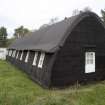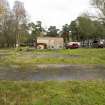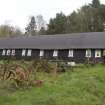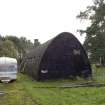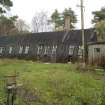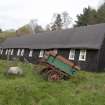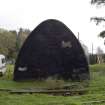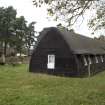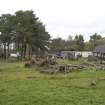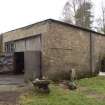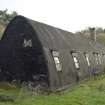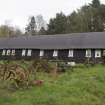Following the launch of trove.scot in February 2025 we are now planning the retiral of some of our webservices. Canmore will be switched off on 24th June 2025. Information about the closure can be found on the HES website: Retiral of HES web services | Historic Environment Scotland
Forfar, Montreathmont Camp, Po Box 25, Listening Station
Hut(S) (20th Century), Military Camp (20th Century), Military Installation(S) (20th Century)
Site Name Forfar, Montreathmont Camp, Po Box 25, Listening Station
Classification Hut(S) (20th Century), Military Camp (20th Century), Military Installation(S) (20th Century)
Alternative Name(s) Scu3; Diplomatic Wireless Station
Canmore ID 239377
Site Number NO55SE 51
NGR NO 59219 53213
NGR Description Centred NO 59219 53213
Datum OSGB36 - NGR
Permalink http://canmore.org.uk/site/239377
- Council Angus
- Parish Kinnell
- Former Region Tayside
- Former District Angus
- Former County Angus
NO55SE 51.00 centred 59219 53213
NO55SE 51.01 NO 59195 54041 Radio Station
A Special Communications listening post, Montreathmont Camp is situated about 900m W of the crossroads of the Brechin to Arbroath road with the B 9113 Forfar to Montrose road and within Montreathmont Forest.
The station was equipped with a DF (direction finding) scanner which was mounted on the roof of the main DF centre building. In addition a power supply and back up generator and to the N (NO55SE 51.01) the RX (receiver and TX (transmitter) aerials. Accommodation was provided in Nissen and 'Canadian' type huts. About 20 other radio masts were also installed.
After the war, the station was renamed the Diplomatic Wireless Station and manned by civilians, closing in 1966. The mast (s) were removed a short time afterwards. Most of the huts and buildings have now been demolished, with only two Nissen huts remaining on site.
The camp and radio mast are visible on postwar vertical air photographs (RAF CPE/Scot/UK 218, 3036-3038, flown 25 June 1947) and the complex, including at least 18 of the masts to the N are depicted on the 1:10000 scale map (1989).
Information from The Courier and Advertiser, 1 March 2003 and RCAHMS (DE), 5 March 2003
The staff who served at the station during the war consisted of about 400 at the camp and another 150 at the radio station and included Canadian and Polish soldiers. In the postwar period staff were employed by the Civil Service, not the Military.
Information from RCAHMS (DE), December 2006





















